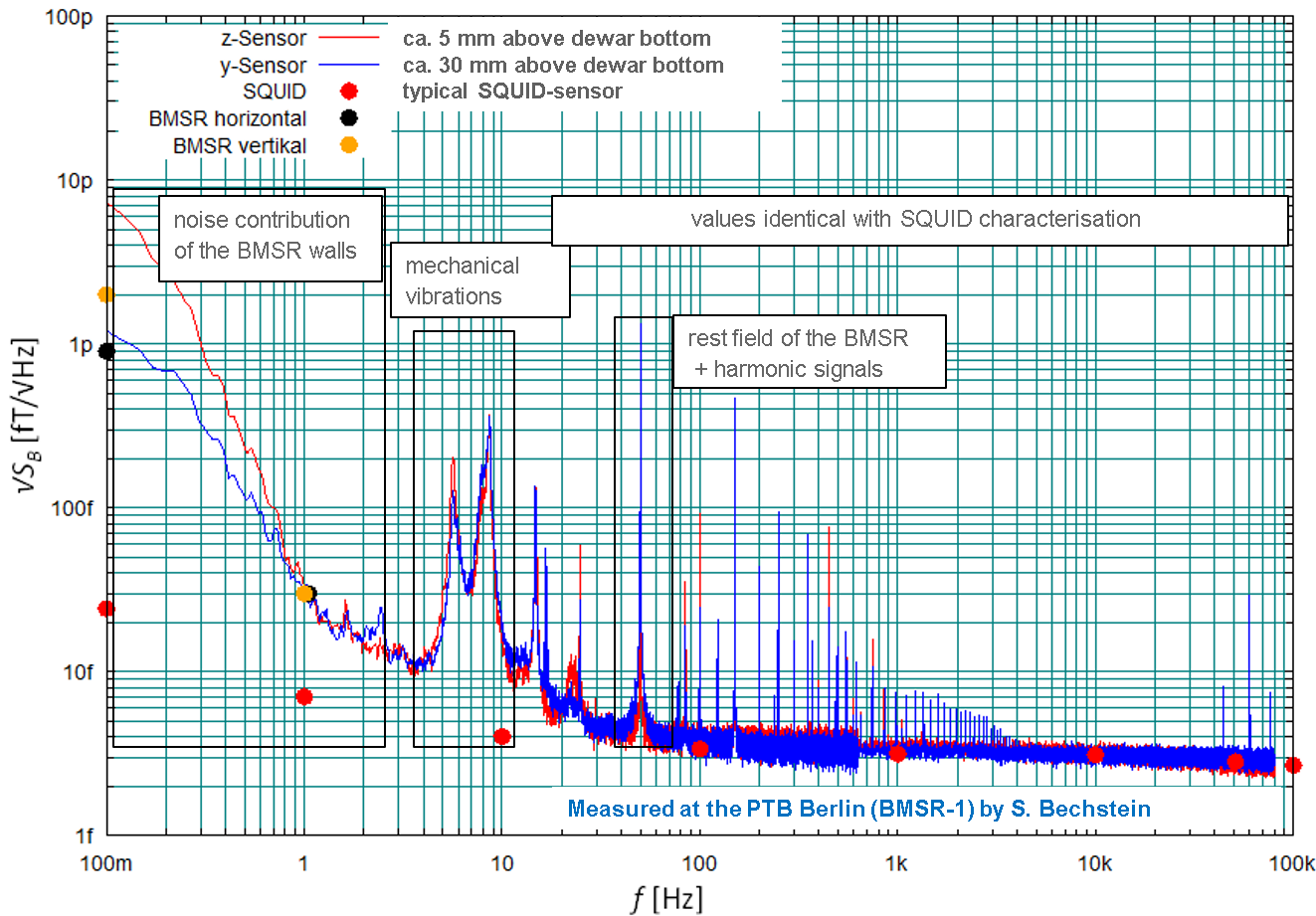You are here: Home / Research and Development
Low noise and non metallic liquid-helium cryostat

Low-noise Magnetic Field Cryostat for SQUID-Applications
Technical Data for the Cryostats
| parameter | value |
|---|---|
| volume of liquid helium | 5 to 12 litre (other volume possible) |
| time to complete evaporation of helium | 3 to 7 days (depends on size) |
| heat load | 0.1 W (in standby operation) |
| rate of helium evaporation | ≤ 3 litre / day |
| holding time of the liquid helium | up to 4 days without refilling |
| initial noise of the cryostat | < 3 fT / Hz½ |
| helium leak test (He-vessel) | < 1 × 10-11 mbar l / s |
ILK Dresden developed low noise magnetic field and non metallic helium cryostats made of GRP (glass reinforced plastics) with a high helium and vacuum holding time.
The cryostats can operate in a direction independent operation mode (tiltable arrangement) and hence they are suitable for a plurality of several applications.
The ILK concept offers much lower permeation rates inside the He-reservoir as comparable models from other manufacturers and is therefore perfect for SQUID (superconducting quantum interference device) applications and other long-term measurements.
The technical design of the cryostats is thus predestined for future sensor generation.
Specification
- suitable for the cooling of SQUID-Sensors
- non-metallic (GRP)
- fast filling with LHe via thermosiphon
- GRP exhaust gas cooled radiation shield for high efficiency.
- small cold-warm distance feasible
- low maintenance
- other design variants possible on costumer request
Low noise magnetic field
The low-noise magnetic field of the cryostat was tested in the magnetically shielded room BMSR-1 of PTB Berlin and is smaller than the lowest resolution limit of the measurement system used, see figure below.
Your Request
Further Projects - Research and Development
Characterisation of Superconductors in Hydrogen Atmosphere
Are superconductors really compatible with hydrogen?
Development of a Cryogenic Magnetic Air Separation Unit
Oxygen Enrichment by Applied Cryogenic Magnetohydrodynamics





















